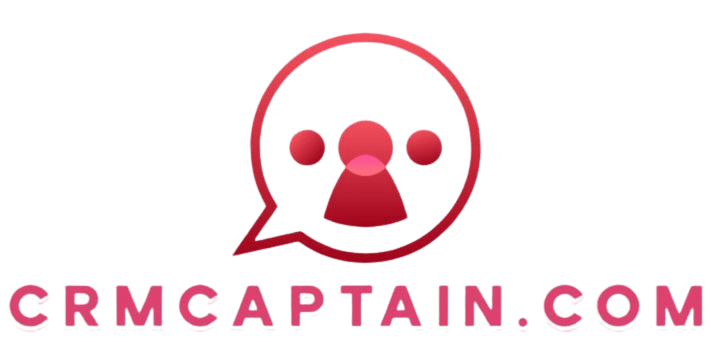“CRM User Training: Virtual vs. In-Person”
In today s fast-paced business landscape, effective training for CRM users is crucial for maximizing productivity and ensuring user adoption.
This article delves into the two primary training methods virtual and in-person highlighting their advantages and limitations. You ll discover essential factors to consider when selecting the right approach, including cost, time, and overall effectiveness.
We also provide best practices for both methods, ensuring your training sessions are not just successful but truly impactful.
Continue reading to uncover the best fit for your team!
Contents
Key Takeaways:

- Proper training is crucial for CRM users.
- Virtual training offers flexibility, but interaction may be limited.
- In-person training provides personalized instruction but can be more costly.
Importance of Proper Training
Proper training is paramount in diverse work environments. It ensures you engage effectively with your CRM system and maximize productivity. It lays the groundwork for your participation and knowledge retention elements that are vital for successful CRM implementation, particularly in the age of digital transformation.
A thoughtfully structured training process promotes accountability and cultivates a culture of ongoing support, enhancing your user experience and professional development.
Embracing a variety of training strategies, whether in-person or remote, allows organizations to cater to your unique learning style and preferences, making training programs more effective across geographical boundaries.
Think about different training methods like:
- e-learning modules
- workshops
- one-on-one coaching
These approaches can significantly influence how you interact with your CRM system. They foster active engagement and boost retention rates by offering practical, hands-on experience that you can apply right away.
Ongoing support, through regular check-ins or refresher courses, reinforces your knowledge and adapts to evolving technologies, ensuring you remain proficient and confident.
This commitment to continuous development enhances your skills while also contributing to the overall success and effectiveness of team dynamics within the organization.
Virtual Training for CRM Users

Virtual training has become a game-changer for CRM users, seamlessly merging the benefits of remote education with cutting-edge online courses tailored to various learning styles.
This delivery method offers you the flexibility of learning at your own pace, letting you engage at your convenience, while also presenting opportunities for live sessions that encourage real-time interaction with fellow participants.
By embracing virtual training for CRM users, organizations can substantially boost engagement levels, effectively tackling the unique challenges posed by digital transformation in the workplace.
Advantages and Limitations
Virtual training presents numerous advantages for CRM users, particularly the flexibility of learning at your own pace. This allows you to access materials whenever you want, promoting both active participation and accountability.
This flexibility can significantly enhance training effectiveness, enabling you to customize your learning experience to suit your schedule and preferences. The interactive tools often integrated into virtual training such as discussion forums, simulations, and quizzes boost your engagement, making the process more dynamic and enjoyable.
You have the opportunity to collaborate in real time, share insights, and ask questions, cultivating a sense of community even from a distance.
But there are also challenges. The absence of face-to-face interaction might make it challenging for some learners to stay focused, as distractions in home and remote office environments can be plentiful.
Maintaining accountability can become tricky; without a structured classroom setting, procrastination may creep in, leading to incomplete coursework and potentially undermining your desired outcomes.
In-Person Training for CRM Users

In-person training is invaluable for CRM users. It offers direct engagement and immediate feedback, greatly enriching your learning experience.
The chance for hands-on practice and face-to-face interaction with professional trainers encourages more questions and discussions, boosting the effectiveness of the training.
The structured environment of in-person sessions helps facilitators focus on creating a supportive atmosphere conducive to team onboarding and skill development.
Benefits and Drawbacks
The benefits of in-person training for CRM users are substantial. It offers enhanced accountability and the opportunity to engage with dynamic training materials.
In these settings, learning becomes more effective as you gain access to real-time feedback and practice within a collaborative atmosphere.
However, organizing in-person sessions can come with challenges. You may face issues related to travel arrangements, time commitments, and conflicting schedules, complicating participation.
Accessibility is also crucial, especially for those in remote locations or with mobility constraints, which could inadvertently exclude some users from valuable training opportunities. Consider accessibility to ensure everyone benefits from training.
Factors to Consider When Choosing Training Method

When selecting a training method for CRM users, weigh key factors that could shape your training success! Assess the training delivery format, cost-effectiveness, and time required for implementation.
Evaluate how effective each training method is in relation to your budget while ensuring that geographical access allows every user to benefit from the chosen strategies.
Don t underestimate the importance of technology integration. It can significantly impact learner engagement and the overall success of the training process.
Cost, Time, and Effectiveness
Cost, time, and effectiveness are essential factors to consider when evaluating training methods for CRM users, as they influence participation and engagement levels.
Your organization must ensure that the training budget aligns with desired outcomes, balancing cost-effective options with the potential advantages of comprehensive training programs.
The time needed to deliver training sessions should also be part of your planning to guarantee a seamless onboarding experience.
As you explore different training methods, it s vital to see how cost, time, and effectiveness work together. High costs might deter you from thorough solutions, but insufficient training can diminish user proficiency and productivity.
On the flip side, streamlined training that is both time-efficient and effective can foster user buy-in, leading to enhanced engagement and retention rates.
As you optimize your workforce capabilities, ensure that your training methodologies stay within budget and deliver tangible results in user performance. This focus is key to maximizing your return on investment.
Best Practices for Virtual and In-Person Training
Implementing best practices for both virtual and in-person training is crucial for ensuring that your sessions resonate with CRM users and elevate their overall experience.
Focus on key strategies such as utilizing engaging training materials, fostering accountability among participants, and encouraging active participation to maximize learning outcomes.
By tailoring your training approaches to accommodate diverse user needs, you can significantly enhance engagement levels and the effectiveness of your training programs.
Tips for Successful Training Sessions
To ensure your training sessions are a resounding success, it s essential to incorporate specific strategies that enhance user participation and optimize the overall experience.
Begin by utilizing effective training materials tailored to the unique learning styles of your audience. Integrating technology that facilitates interaction and engagement can make all the difference! It transforms passive viewers into active participants.
Implementing robust feedback mechanisms ways to gather opinions from participants is crucial because it ensures that attendees feel heard and supported throughout their learning journey.
Encouraging active participation creates a dynamic atmosphere and significantly boosts information retention. Consider using multimedia presentations and interactive quizzes! These tools cater to diverse preferences and keep attendees engaged.
Use tools like online discussion boards or real-time polls. These encourage participants to share ideas, fostering a rich exchange of thoughts.
After each session, gather structured feedback through surveys or informal discussions. This iterative process leads to a more effective and responsive learning environment, ensuring that each training experience is better than the last.
Frequently Asked Questions
What is the difference between virtual and in-person CRM user training?
Virtual CRM user training is conducted online, typically through video conferencing software, while in-person training takes place face-to-face in a physical location.
Is one type of training more effective than the other?
Choosing the right training type relies on your team’s needs. Some may find virtual training more convenient and accessible, while others may benefit from the hands-on approach of in-person training.
What are the advantages of virtual CRM user training?
Virtual training allows for flexibility and convenience, as participants can attend from anywhere with an internet connection. It also eliminates the need for travel and can be more cost-effective.
Are there any drawbacks to virtual CRM user training?
Virtual training may not be as engaging as in-person training because there is less face-to-face interaction and hands-on learning opportunities. Technical difficulties and distractions can also pose challenges.
What are the benefits of in-person CRM user training?
In-person training allows for more personalized attention and immediate feedback from the trainer. It also provides a more immersive learning experience and opportunities for networking with other participants.
Which type of training is best for my team?
The best training format depends on your team’s specific needs and preferences. Consider factors such as budget, location, and learning style before deciding.
Start planning your next successful training session today!






